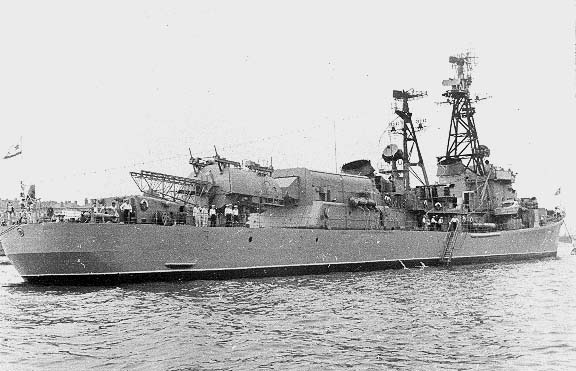The advanced Yaks were purported to be better than any German prop fighters, and possibly even superior to the P51 mustang.I have an MA in military history, have published articles on military history, and am currently writing a book on advanced military technology between 1935 and 1955. I recited all that from personal knowledge.
The Soviets shot down a U2 in 1960. In 1946 nobody had a operational surface to air missile in inventory. The US and Soviets were working to build one. The US programs were US Army- Nike missile, US Navy Project Bumblebee that became Talos. There were several studies going on too like the USAAF's Wizard and Thumper. In the Soviet Union they were trying to develop one from the shit German Wasserfall missile of late WW 2. In the end, they dumped that and developed the S-25 Berkut missile (the radar used with it is quite unique and innovative by the way).

If you look deeper into Soviet aircraft in 1946, the typical performance limit is around 15,000 feet. Above that the performance starts to drop off dramatically. Most have a single stage supercharger and were optimized for lower altitude operations. The Yak 3 and 9 are both that way. Even the later Yak 11 doesn't have the stuff to really intercept B-29's. The Lavochikin series is the same way. You can see this from these piston engine fighter's use in Korea. That's a big reason the MiG 15 was brought in.
The Soviet planes are much like the WW 2 US fighters with un-turbocharged Allison engines. These, like the P-39 and 40 also were good to 15,000 feet even as their service ceilings were listed as 25,000+ feet. You have to look at the engine performance curves for these planes to spot that.
But there's another part to successful intercepts and that's having a control system in place that can make it happen. In 1946 the Soviet system was still very rudimentary and lacked the refinements the British, US, or Germans had in their air defense systems. It's not so much a criticism of ability but rather a realistic appreciation of what was possible.
In 1946, this is where the US was at with an air-to-air missile:

It would be 1950 before the Soviets got their first one in testing. Not their fault particularly, because they started from scratch in 1946 -47 were as the US had already been developing theirs since 1944.
The Soviets made up for this lack by retaining a huge ground army in Europe. The threat was that a nuclear attack would bring a ground war that Western Europe and the US couldn't win.
At the time (1946) the most the US could have realistically done is nuke about half a dozen to a dozen cities in the Soviet Union, but even then much of Soviet industry was out of range of a B-29 strike from say, England. The US knew that too and wanted to avoid a war as much as the Soviets did.
The wierd thing is I have heard lots of garden variety American Republicans fantasizing about a nuclear first strike on Russia, but of the thousands of Russian civilians I know and have met, not a single one expressed fantasies about a nuclear first strike on America.




